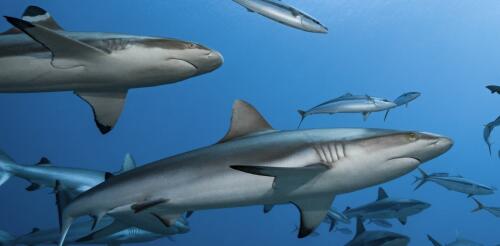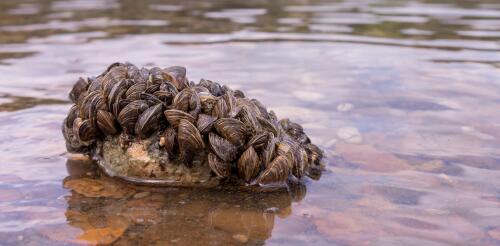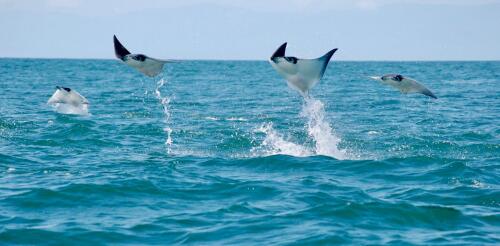Predators
There are more than 500 species of sharks in the world’s oceans, from the 7-inch dwarf lantern shark to whale sharks that can grow to over 35 feet long. They’re found from polar waters to the equator, at the water’s surface and miles deep, in the open ocean, along coasts and even in some coastal rivers. With such diversity, it’s no surprise that sharks serve many ecological functions. For example, the largest individuals of some big predatory species, such as tiger and white sharks, can have an oversized role in maintaining balances among species. They do this by feeding on prey and sometimes by just being present and scary enough that prey species change their habits and locations. In a newly published study, colleagues and I surveyed decades of research on sharks’ ecological roles and considered their future in oceans dominated by people. We found that because sharks play such diverse and sometimes important functions in maintaining healthy ocean...
Fishermen across the Gulf of Mexico are reporting that something is eating fish off their lines. What’s to blame? Many recreational anglers point a finger at sharks. This conflict has caught politicians’ attention. Congress has directed the National Oceanic and Atmospheric Administration, which regulates fishing in U.S. waters, to review shark and dolphin interactions with fisheries, and the U.S. House of Representatives recently passed the SHARKED Act, which would create a task force to address the problem. I’ve studied this conflict, which is formally called depredation, for the past decade. While some shark populations in the Gulf of Mexico, such as bull sharks, are increasing, my colleagues and I have found evidence that human perceptions are also an important factor. A Gulf angler races to land a fish before sharks take it. Sharky waters The Gulf of Mexico is home to more than 70 species of sharks – and those...
Montanans know spring has officially arrived when grizzly bears emerge from their dens. But unlike the bears, the contentious debate over their future never hibernates. New research from my lab reveals how people’s social identities and the dynamics between social groups may play a larger role in these debates than even the animals themselves. Social scientists like me work to understand the human dimensions behind wildlife conservation and management. There’s a cliché among wildlife biologists that wildlife management is really people management, and they’re right. My research seeks to understand the psychological and social factors that underlie pressing environmental challenges. It is from this perspective that my team sought to understand how Montanans think about grizzly bears. To list or delist, that is the question In 1975, the grizzly bear was listed as threatened under the Endangered Species Act following decades of extermination efforts and habi...
Invasive species – including plants, animals and fish – cause heavy damage to crops, wildlife and human health worldwide. Some prey on native species; other out-compete them for space and food or spread disease. A new United Nations report estimates the losses generated by invasives at more than US$423 billion yearly and shows that these damages have at least quadrupled in every decade since 1970. Humans regularly move animals, plants and other living species from their home areas to new locations, either accidentally or on purpose. For example, they may import plants from faraway locations to raise as crops or bring in a nonnative animal to prey on a local pest. Other invasives hitch rides in cargo or ships’ ballast water. When a species that is not native to a particular area becomes established there, reproducing quickly and causing harm, it has become invasive. These recent articles from The Conversation describe how several invasive species are causing eco...
Many sharks and rays are known to breach, leaping fully or partly out of the water. In a recent study, colleagues and I reviewed research on breaching and ranked the most commonly hypothesized functions for it. We found that removal of external parasites was the most frequently proposed explanation, followed by predators chasing their prey; predators concentrating or stunning their prey; males chasing females during courtship; and animals fleeing predators, such as a ray escaping from a hammerhead shark in shallow water. We found that the highest percentage of breaches, measured by the number of studies that described it, occurred in manta rays and devil rays, followed by basking sharks and then by eagle rays and cownose rays. However, many other species of sharks, as well as sawfishes and stingrays, also perform this behavior. A breaching white shark surprises researchers off Cape Cod, Massachusetts. Why it matters It takes a lot of ene...




